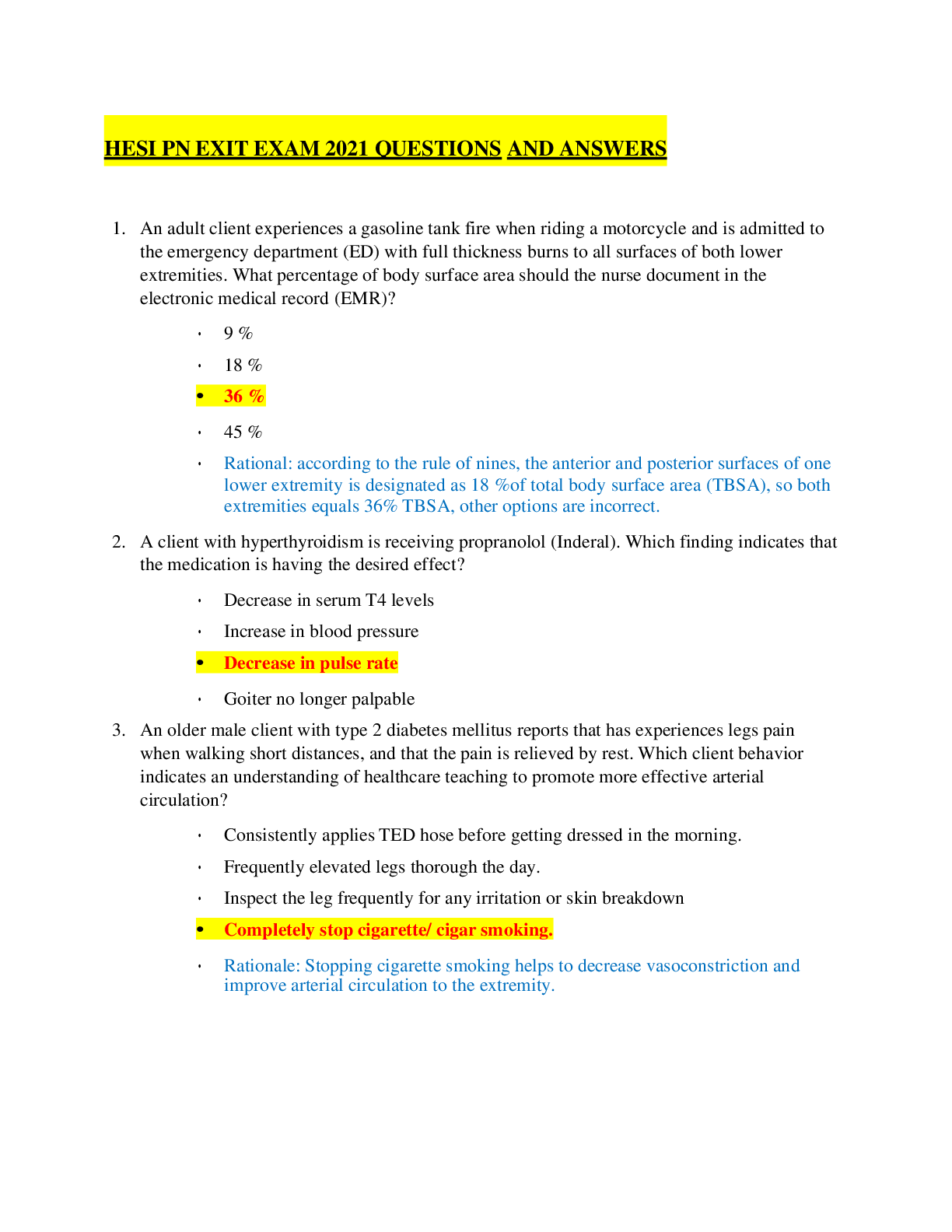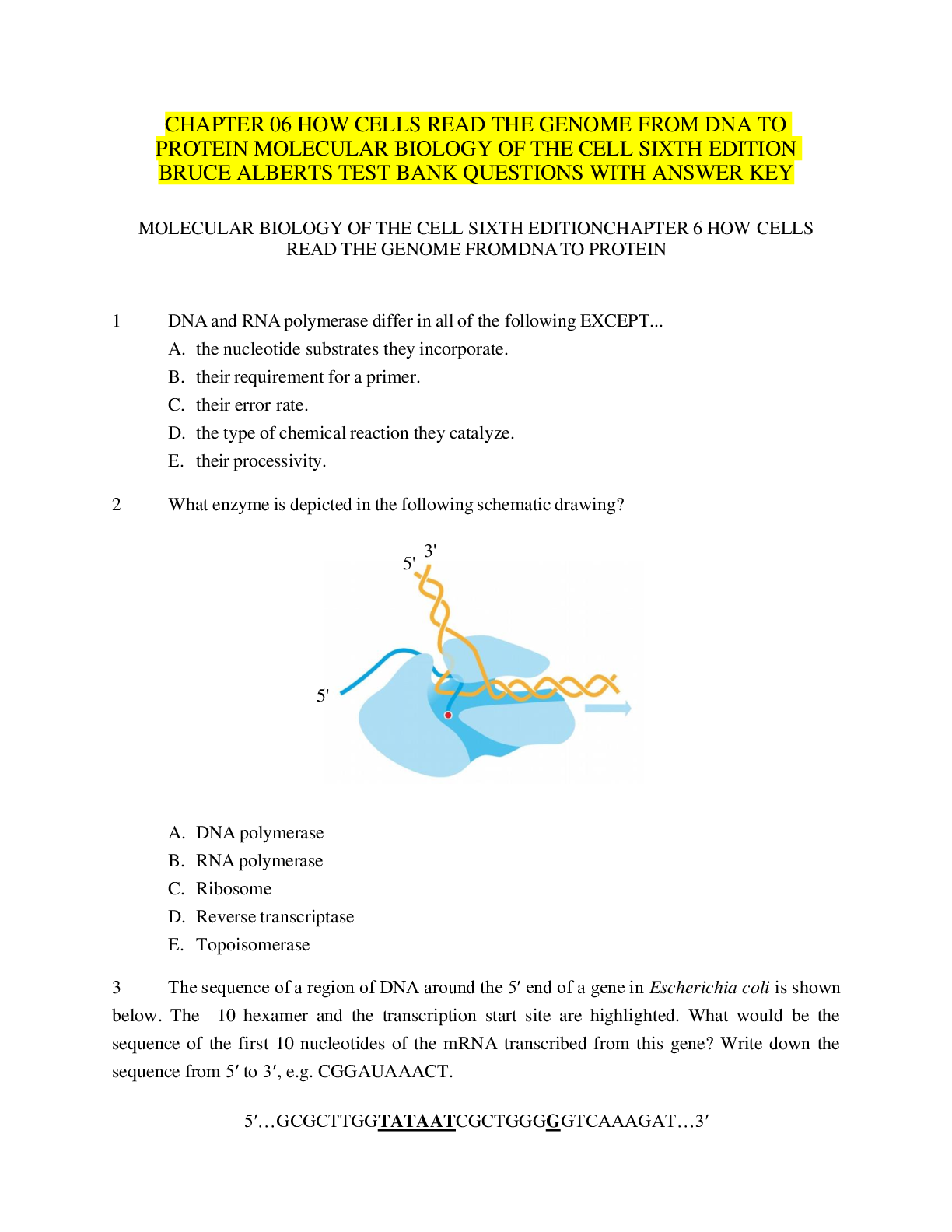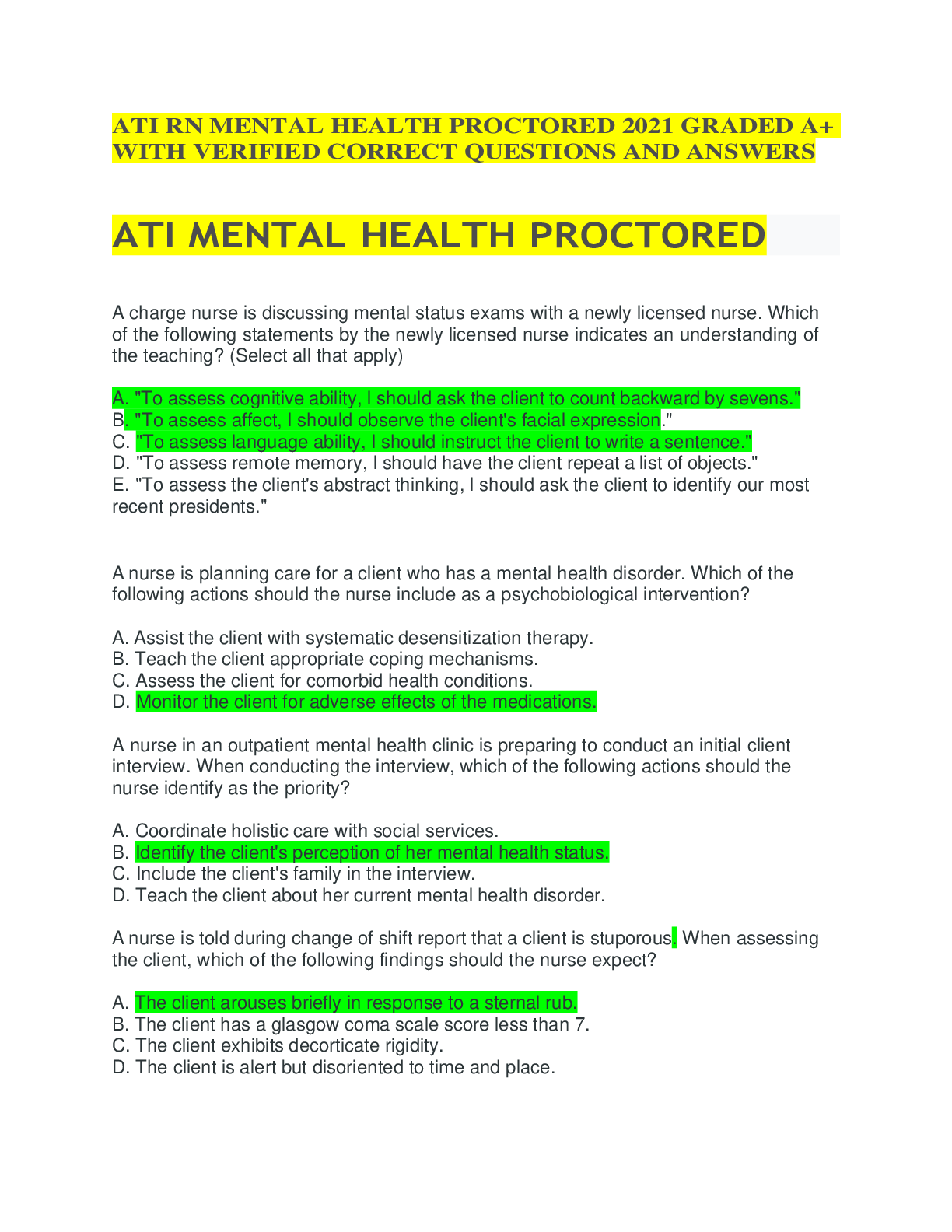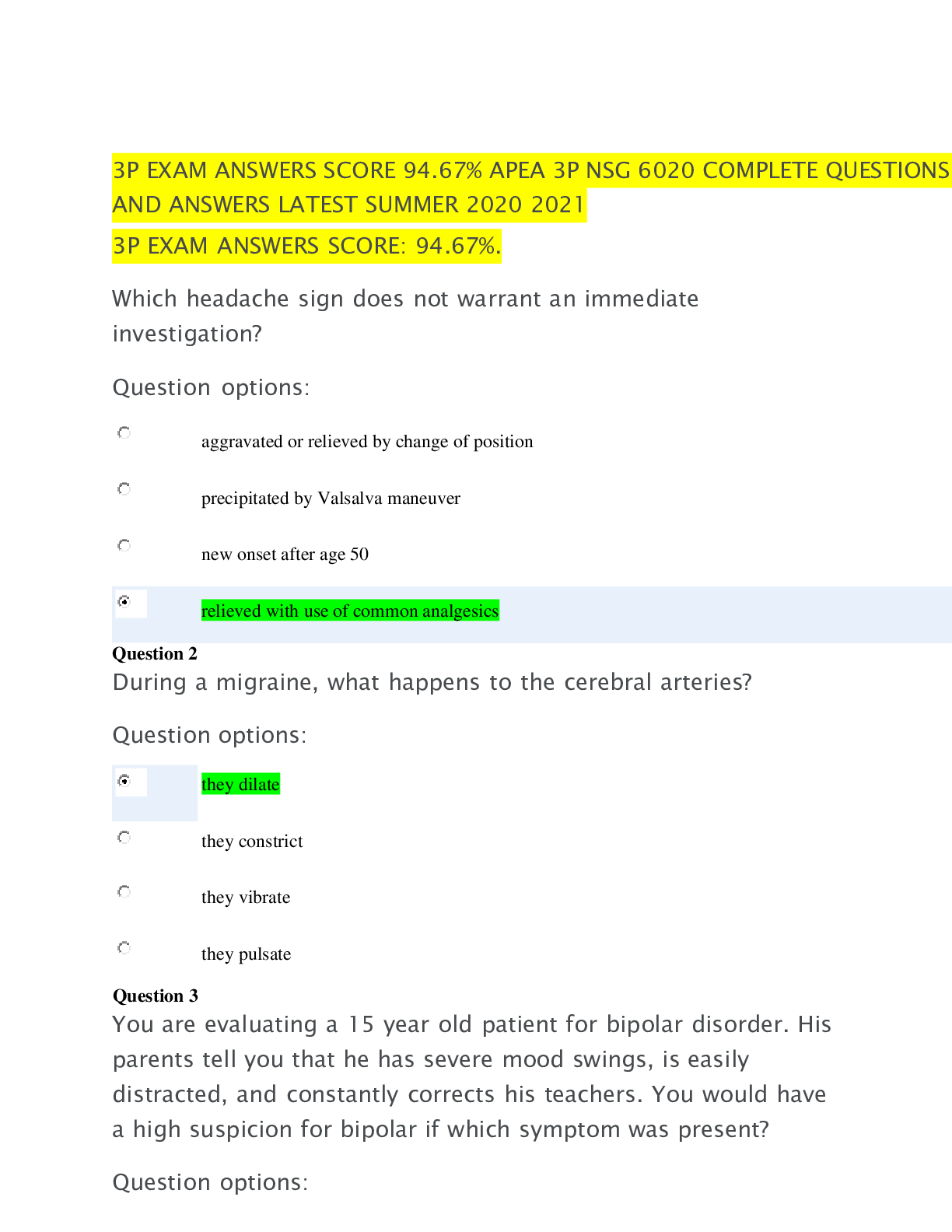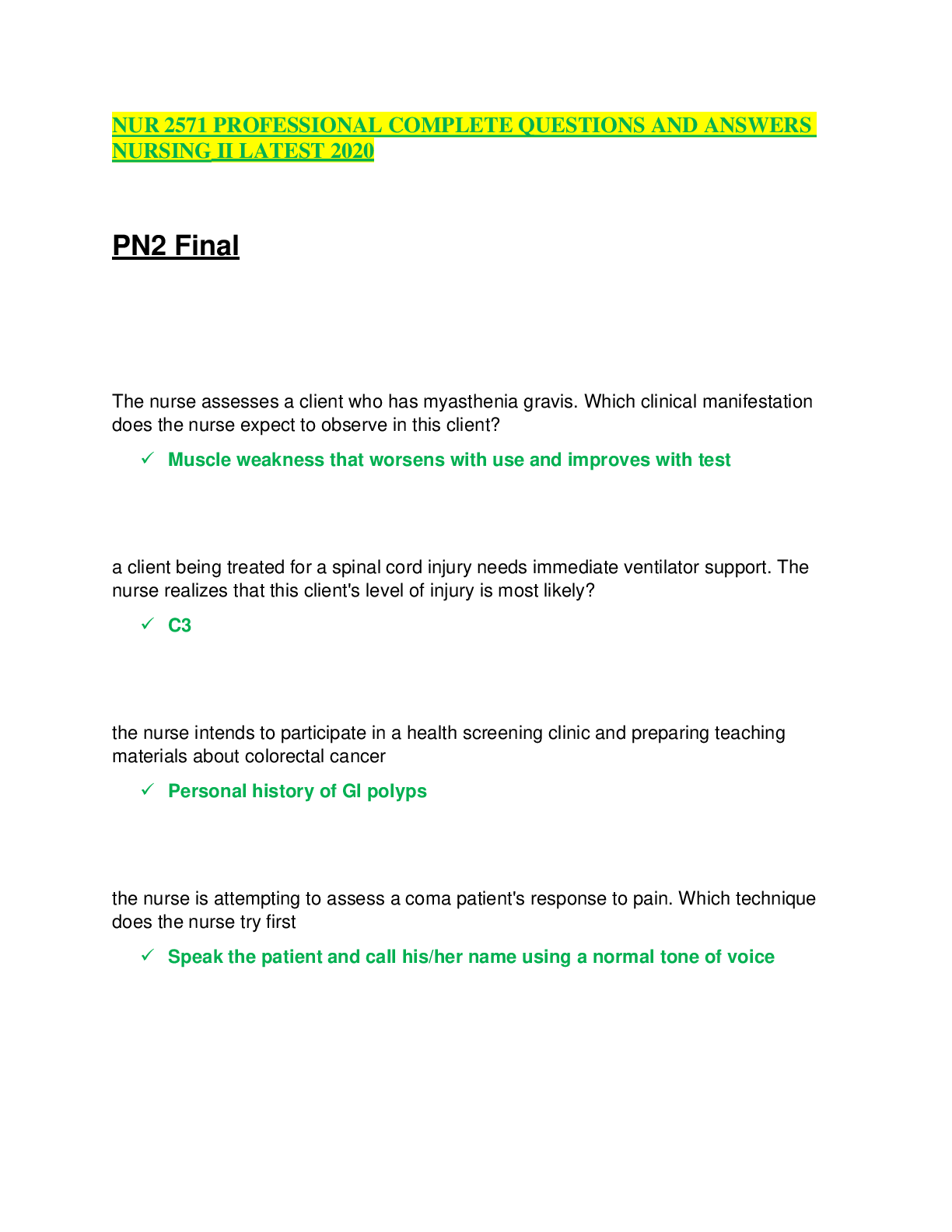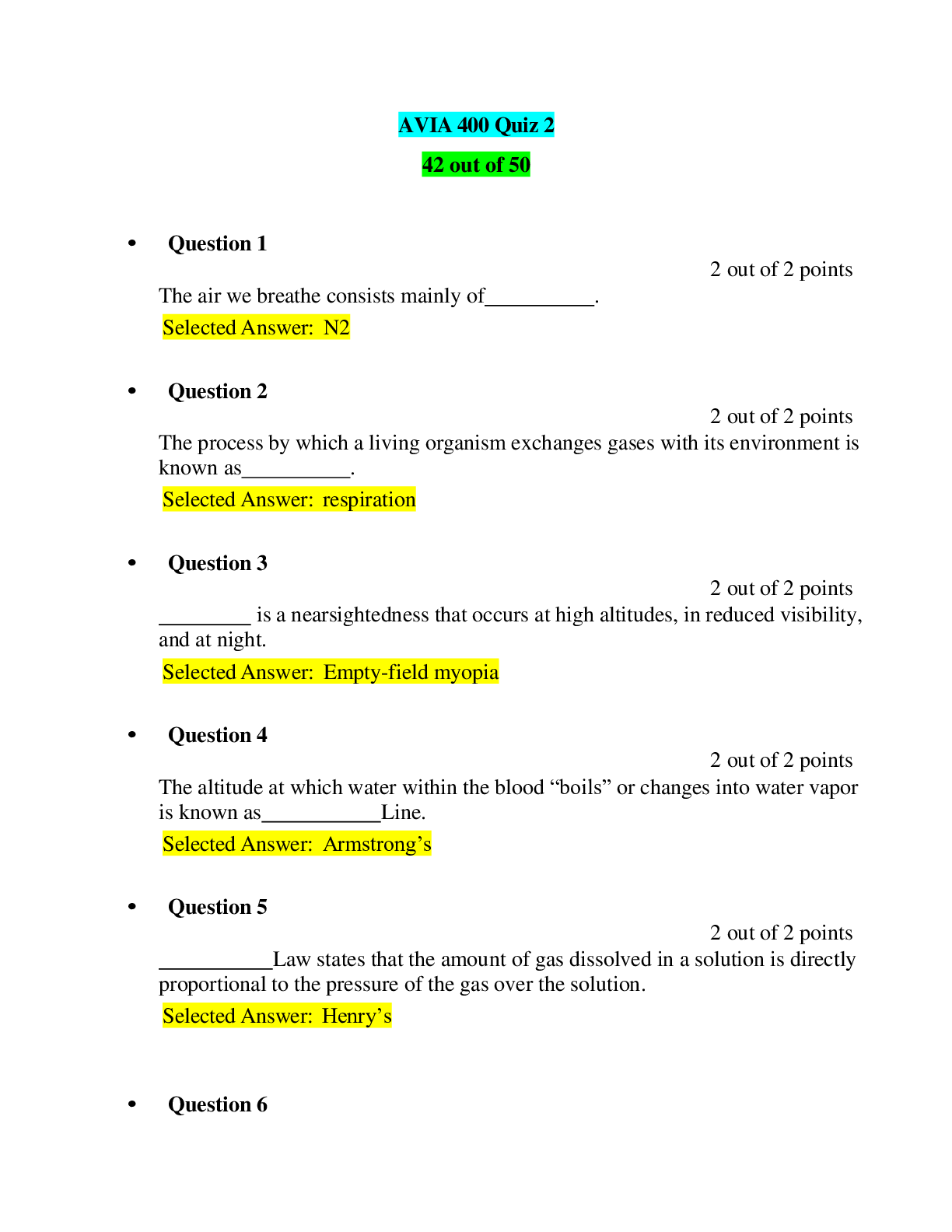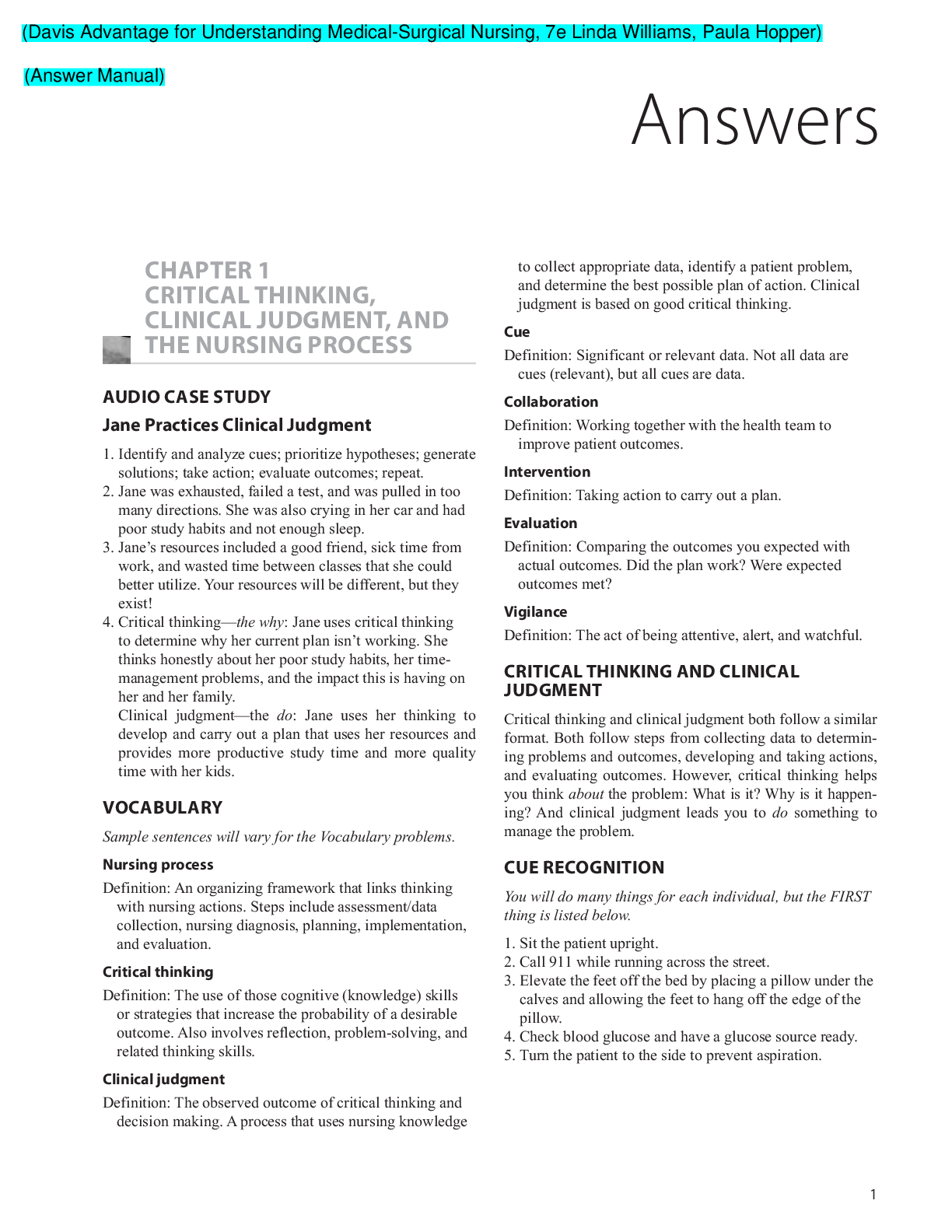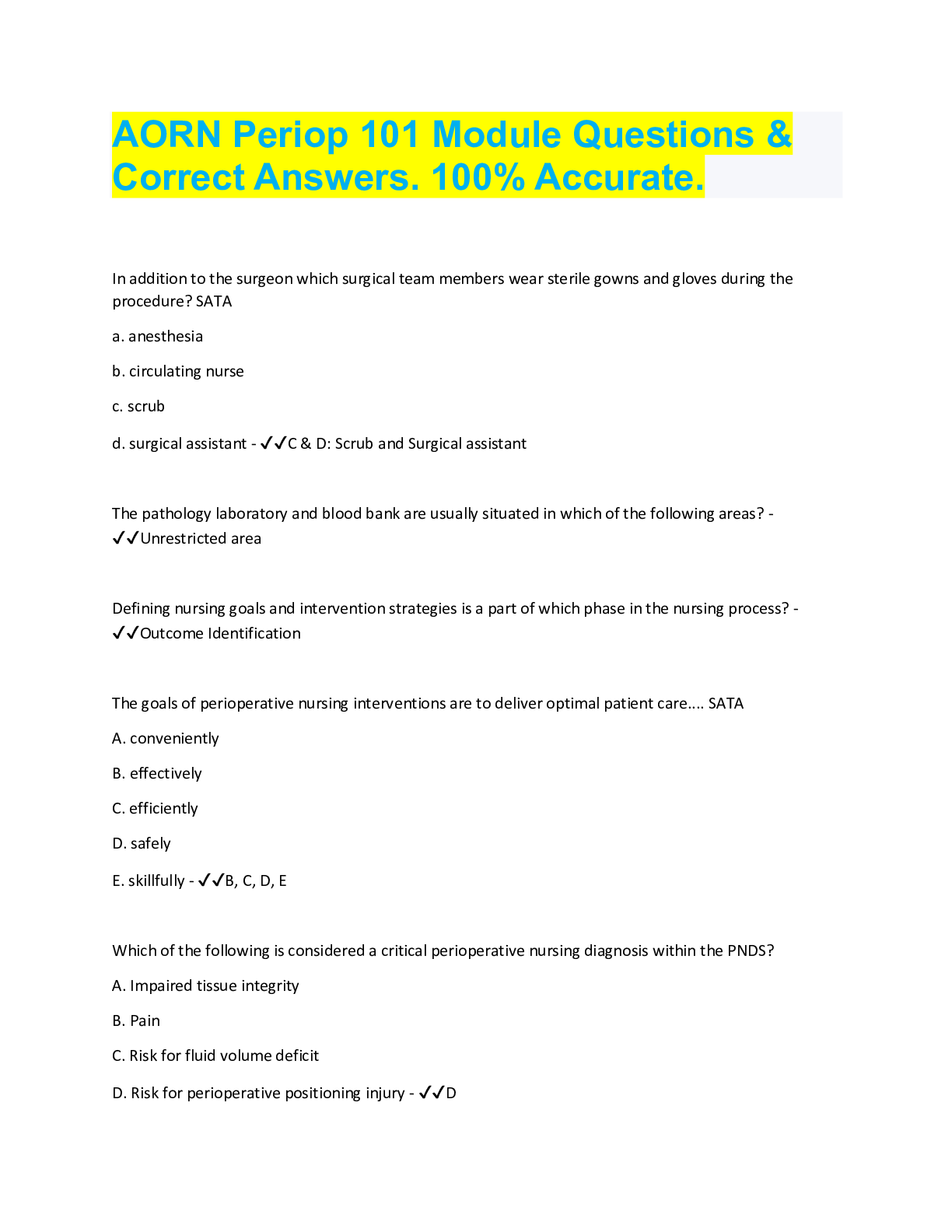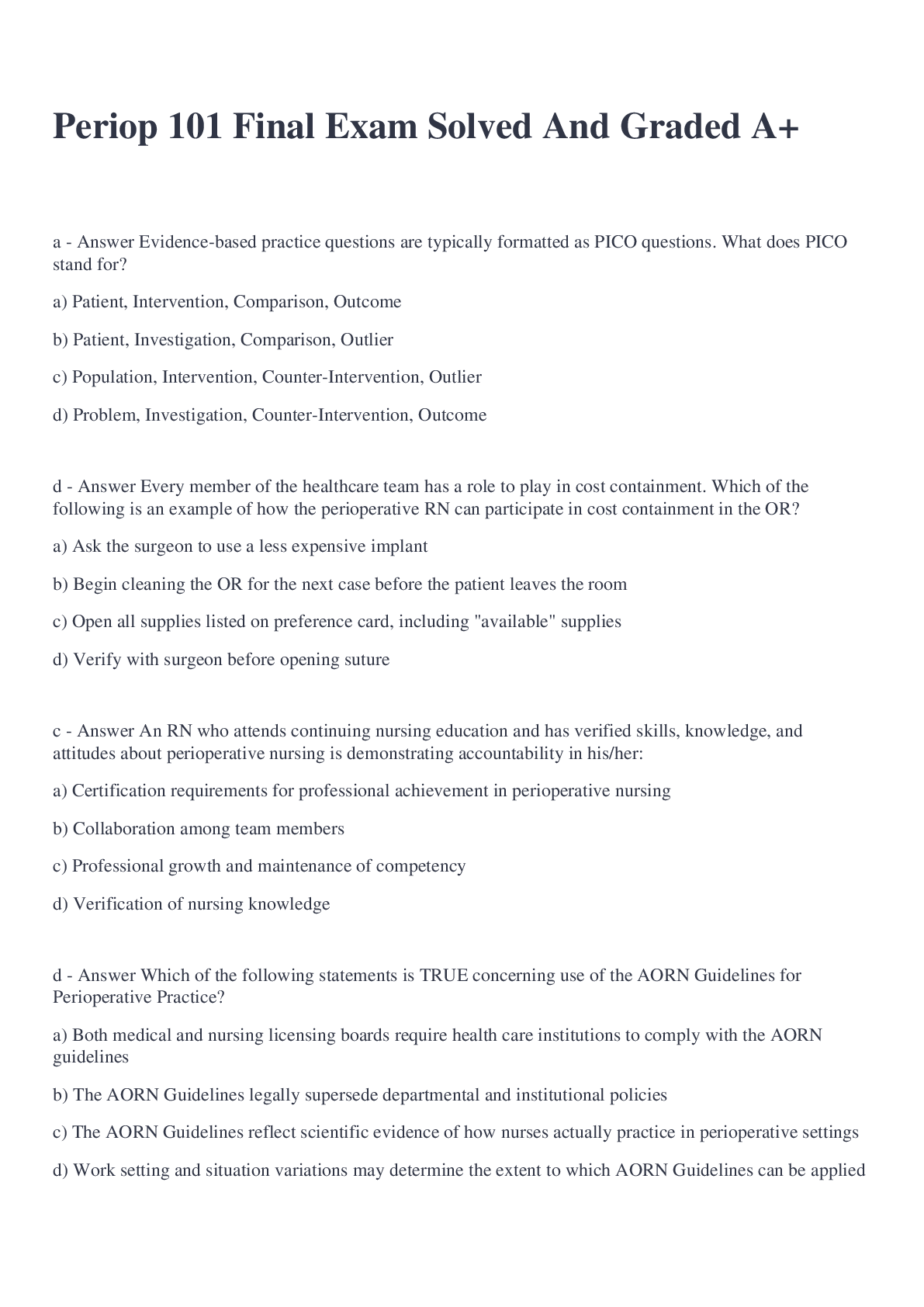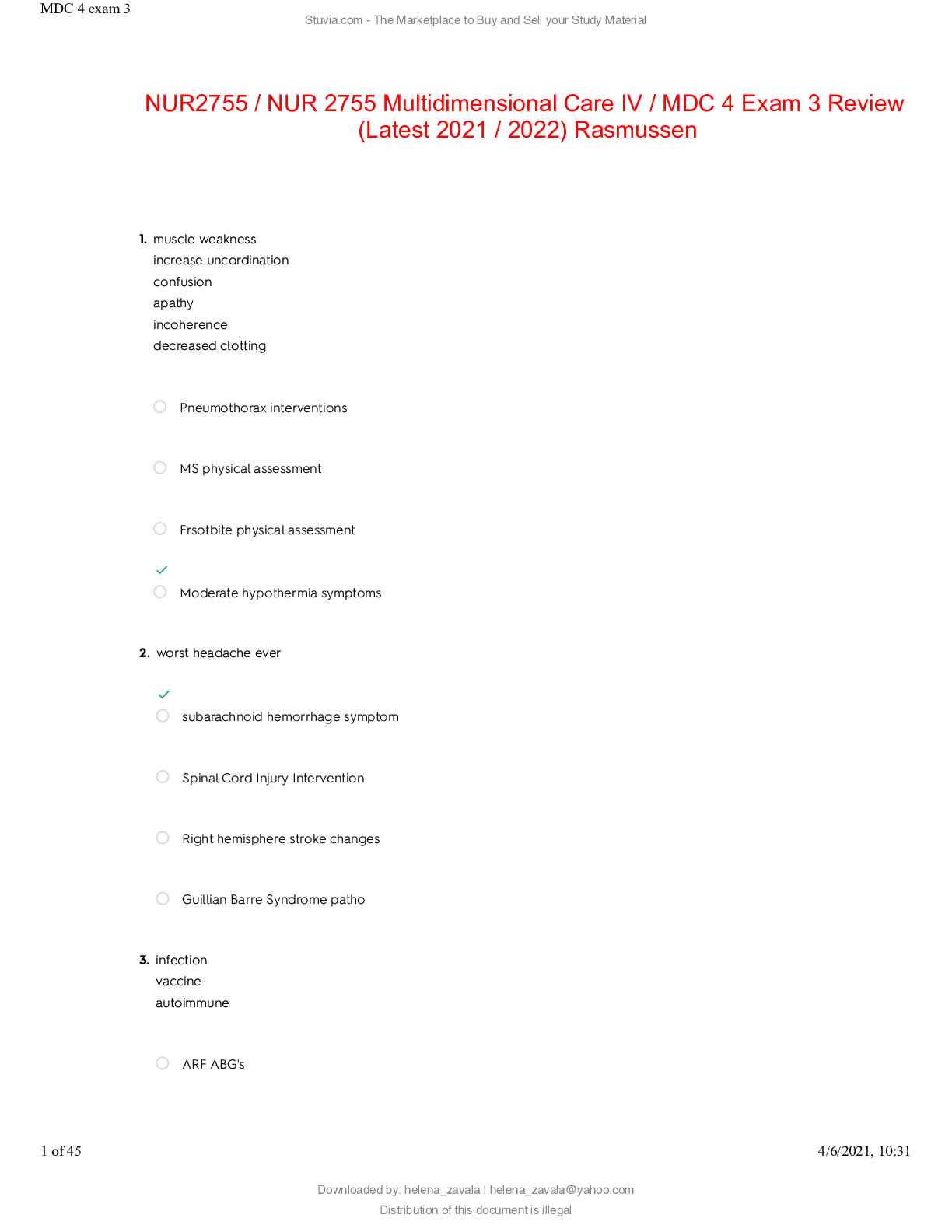Chemistry > QUESTIONS & ANSWERS > The Mole conversions, Mass Determination, & hydrates (All)
The Mole conversions, Mass Determination, & hydrates
Document Content and Description Below
The Mole conversions, Mass Determination, & hydrates This Exploration contains targeted background content to prepare you for performing the exercises in this lesson. Learning Objectives Define th... e concept of a mole. Distinguish between the terms: atomic mass, molecular mass, and molar mass. Convert between mass, moles, atoms, and molecules. Define and name hydrates by the number of moles of water held in a compound. Explore The Mole A single atom or a single molecule is so small that chemists are seldom able to work with one at a time. Even when weighing the smallest quantities of substances, numerous atoms and molecules are present. A unit of measure called a mole is used to combat this problem, allowing for successful work with defined quantities of atoms and molecules. *****A mole (n) is a unit of measure, describing the amount of a chemical substance that contains as many atoms, molecules, or formula units as there are in exactly 12 grams of pure carbon (12C). This amount of particles (6.022 × 1023) is referred to as Avogadro’s number. *****The atomic masses shown on the periodic table are the average masses of the various isotopes of each element, expressed in atomic mass units, or amu. The atomic mass unit was standardized to be equal to exactly 1/12th the mass of one carbon-12 (12C) atom; thus, one 12C atom has a mass of 12.000 amu. However, carbon has three isotopes (12C, 13C, and 14C) that contain six protons each, but the isotopes vary in the number of neutrons. The different number of neutrons leads to variation in the amu of each isotope. Since natural carbon (C) is composed of some of each isotope, it has an average atomic mass of 12.011 amu, as shown on the periodic table in Figure 1.Figure 1. Periodic Table of Elements.******The atomic mass (atomic weight) of an element is equal to the mass in grams required to equal 1 mole of the substance. Because atomic mass units and the mole are defined from the same reference (carbon-12), the value on the periodic table can represent the mass of a single atom in atomic mass units or the mass of a mole of substance in grams. Thus, the atomic mass units shown on a periodic table are numerically equivalent to the ****** molar masses of the elements or the mass in grams of each element that contains one mole of atoms of that element. For example, the element nitrogen has a molar mass of 14.007 grams, thus 1 mole of nitrogen is equal to 14.007 grams. Likewise, the compound H2O has a molar mass of 18.015 (H + H + O = 1.008 + 1.008 + 15.999), thus 1 mole of H2O is equal to 18.015 grams. The mass of one mole of a substance (molar mass) is equal to either its atomic mass expressed in grams (if it is a monoatomic element) or its ******molecular mass expressed in grams (if it is a diatomic element or compound). *************************************************************************** *************************************************************************** **************************************************************Explore Co nversions Molar mass conversions are common calculations in chemistry laboratories. Example calculations are provided below to further explore the relationships between molar masses, moles, grams, and atoms. For each example, assume that a vial contains 12.5 grams of magnesium chloride (MgCl2), and you need to know how many moles and atoms of magnesium and chlorine are in the vial. Example #1: Calculating the Molar Mass of a CompoundWhat is the molar mass of MgCl2? 1. Identify the molar mass of each element in the compound using the periodic table. For MgCl2: Molar mass of Mg=24.305 g Mg=1 mole Mg Molar mass of Cl=35.453 g Cl=1 mole Cl 2. Add the molar mass of each element in the compound together. *****In the compound MgCl2 there is 1 mole of magnesium and 2 moles of chlorine: Molar mass of MgCl2 = 24.305 g/mol + (2×35.453 g/mol) = 95.211 g/mol The molar mass of MgCl2 is 95.211 g MgCl2: 95.211 g MgCl2 = 1 mole MgCl2. Example #2: Calculating the Number of Moles of a Compound in a Sample How many moles of MgCl2 are present in a sample weighing 12.5 g? 1. Calculate the molar mass of the compound using the periodic table. From Example #1, the molar mass of MgCl2 is 95.211 g/mol. 2. Use the molar mass to convert the mass (grams) of the sample to moles. The mass of the MgCl2 sample in this example is 12.5 g. 12.5 g MgCl2 * 1 mol MgCl2/ (divide) 95.211g MgCl2=0.131 mol of MgCl2 There are 0.131 mol of MgCl2 in 12.5 g of MgCl2 Example #3: Calculating the Number of Moles of an Element in a Sample How many moles of Mg are present in 12.5 g MgCl2? How many moles of Cl are present? 1. Calculate the molar mass of the compound using the periodic table. ***From Example #1, the molar mass of MgCl2 is 95.211 g/mol. 2. Use the molar mass to convert the mass (grams) of the sample to moles. ******From Example #2, there are 0.131 mol MgCl2 in a 12.5 g sample. 3. Calculate how many moles of each element are present in the moles of the compound. *****For MgCl2, calculate the number of moles of Mg present in 0.131 mol MgCl2: 0.131 mol MgCl2 *1 mol Mg/ (divide) 1 mol MgCl2 = 0.131 mol of Mg ******* Calculate the number of moles of Cl present in 0.131 mol MgCl2: 0.131 mol MgCl2* 2 mol Cl/ (divide) 1 mol MgCl2= 0.262 mol Cl There are 0.131 mol of Mg and 0.262 mol of Cl in 12.5 g of MgCl2. Example #4: Calculating the Number of Atoms of an Element in a Sample How many atoms of Mg are present in 12.5 g MgCl2? How many atoms of Cl are present? 1. Calculate the molar mass of the compound using the periodic table. ******From Example #1, the molar mass of MgCl2 is 95.211 g/mol. 2. Use the molar mass to convert the mass (grams) of the sample to moles. ******From Example #2, there are 0.131 mol MgCl2 in a 12.5 g sample. 3. Calculate how many moles of each element are present in the moles of the compound. ******From Example #3, there are 0.131 mol Mg and 0.262 mol Cl in 0.131 mol MgCl2. [Show More]
Last updated: 1 year ago
Preview 1 out of 10 pages
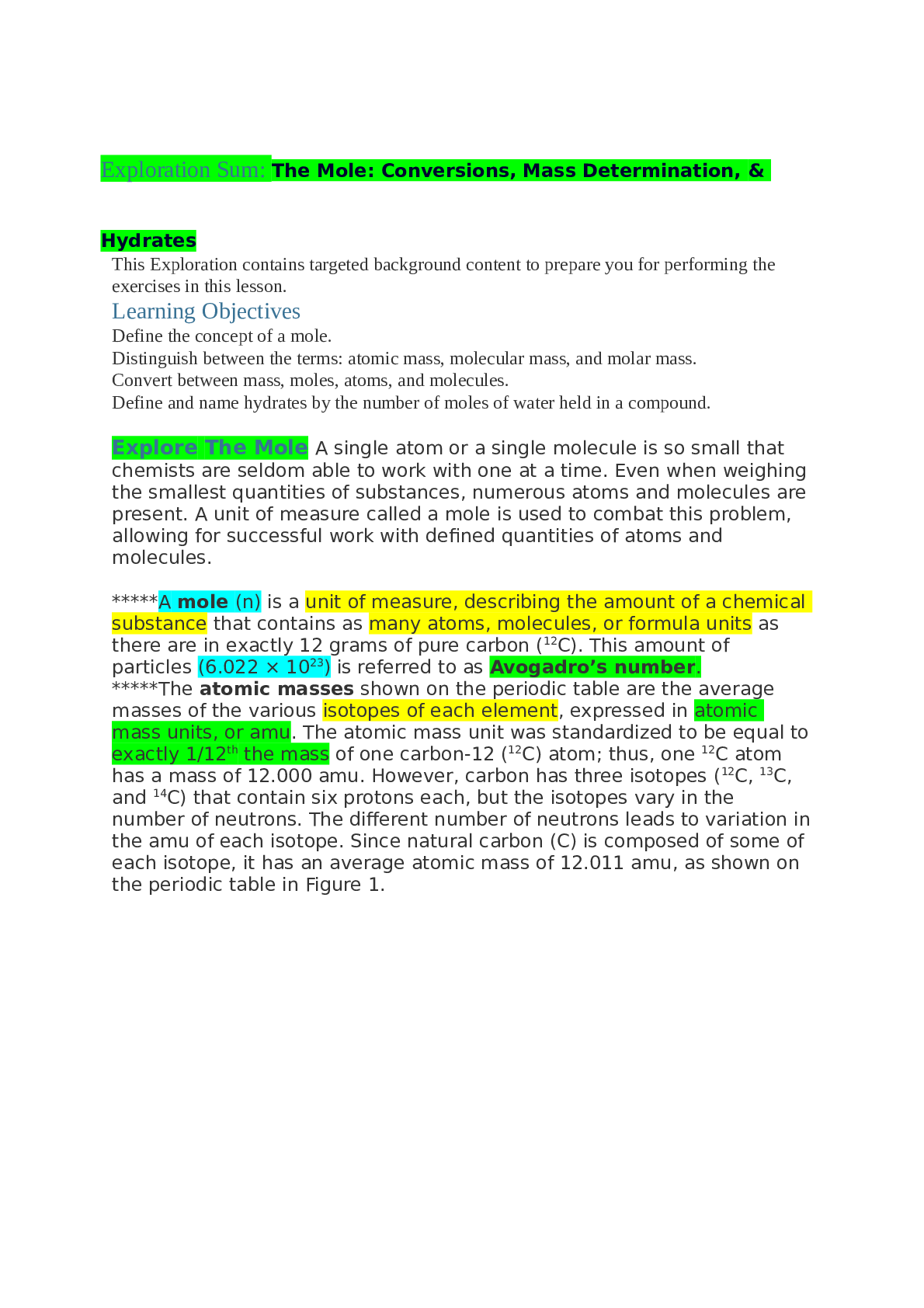
Reviews( 0 )
Document information
Connected school, study & course
About the document
Uploaded On
Feb 09, 2023
Number of pages
10
Written in
Additional information
This document has been written for:
Uploaded
Feb 09, 2023
Downloads
0
Views
82

